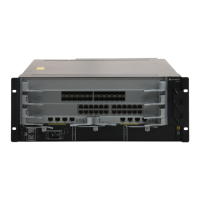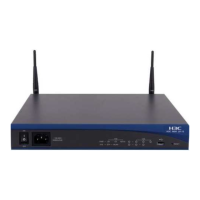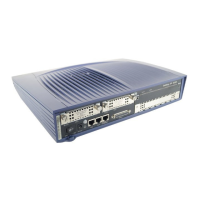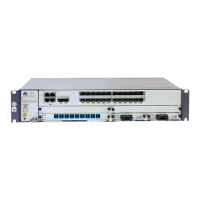Command Manual - Port
Quidway S6500 Series Ethernet Switches Chapter 2 Link Aggregation Configuration Commands
Huawei Technologies Proprietary
2-5
member ports, port state, port priority, LACP state flag, operation key) and detailed
remote information (local port, indexes of remote ports, port priority, LACP state flag,
operation key and system ID, here local and remote are in a relative sense).
Note that since the manual aggregation group cannot get the information of the peer
end, every item of the peer end is displayed as 0, which does not indicate the actual
state of the peer system.
Example
# Display detailed information of aggregation group 1.
<Quidway> display link-aggregation verbose 1
Loadsharing Type: Shar – Loadsharing, NonS – Non-Loadsharing
Aggregation ID: 20, AggregationType: Static, Loadsharing Type: NonS
Aggregation Descripiton: myagg1
System ID: 0x8000, 00e0-fcff-ff04
Port Status: S -- Selected, T -- sTandby
Local:
Port Status Priority Flag Oper-Key
-------------------------------------------------------------------
Ethernet4/0/3 S 32768 0x3d 3
Remote:
Actor Partner Priority Flag Oper-Key SystemID
-------------------------------------------------------------------
Ethernet4/0/3 2 32768 0x3d 3 0x8000,00e0-fcff-ff01
2.1.7 display link-aggregation interface
Syntax
display link-aggregation interface { interface-type interface-number |
interface-name } [ to { interface-type interface-num | interface-name } ]
View
Any view
Parameter
interface { interface_type interface_ num | interface_name } [ to { interface_type
interface_ num | interface_name } ]: Specifies ports. You can specify multiple sequential
ports with the to parameter, instead of specifying only one port. interface_name
specifies port name, in the format of interface_name = interface_type interface_num.
interface_type specifies port type and interface_num port number. For more
information, see the parameter item for the interface command.
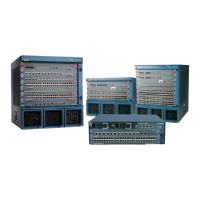
